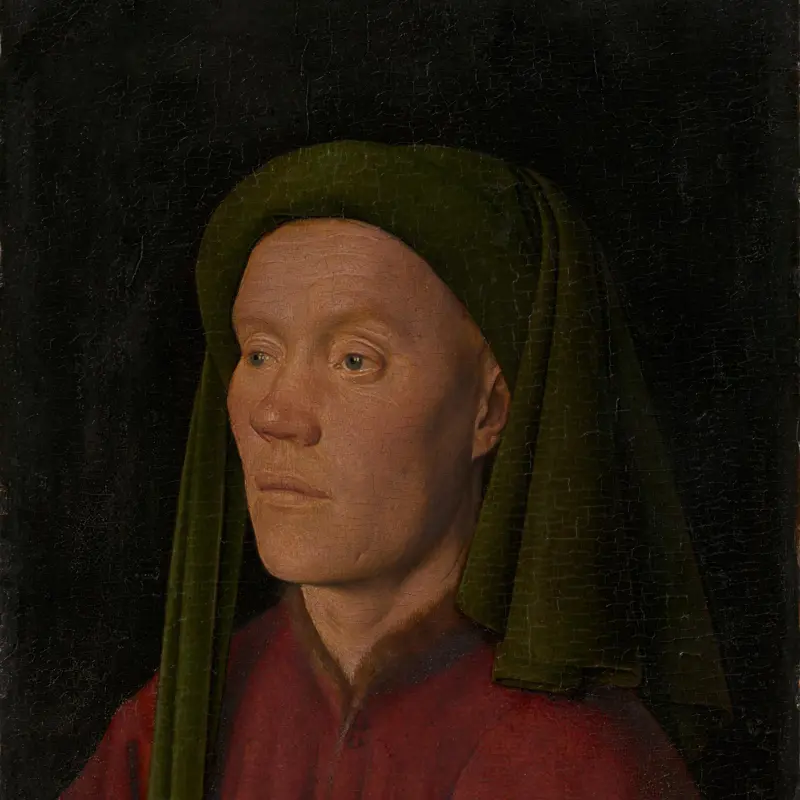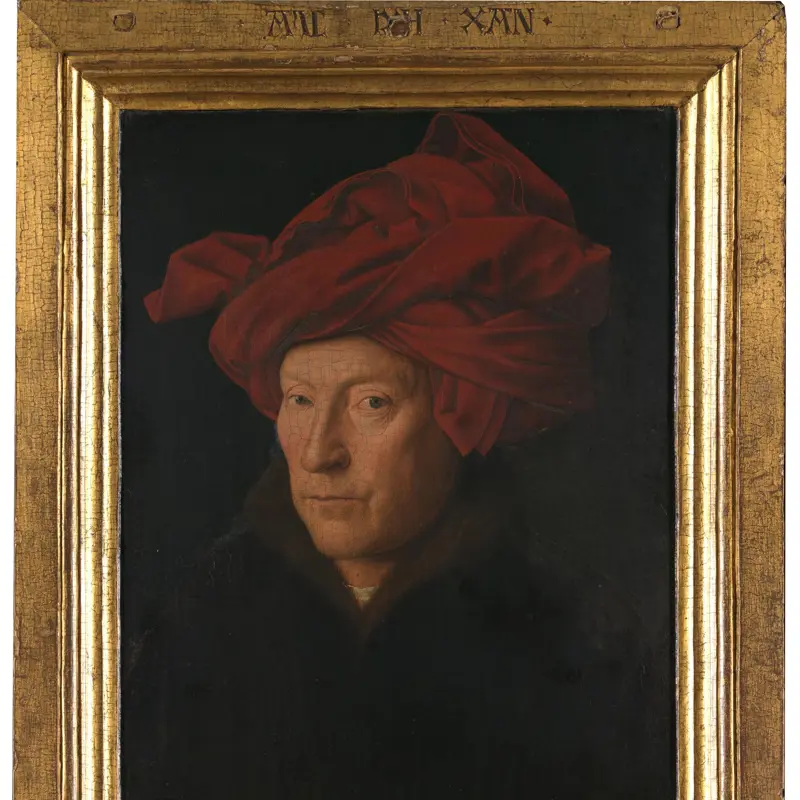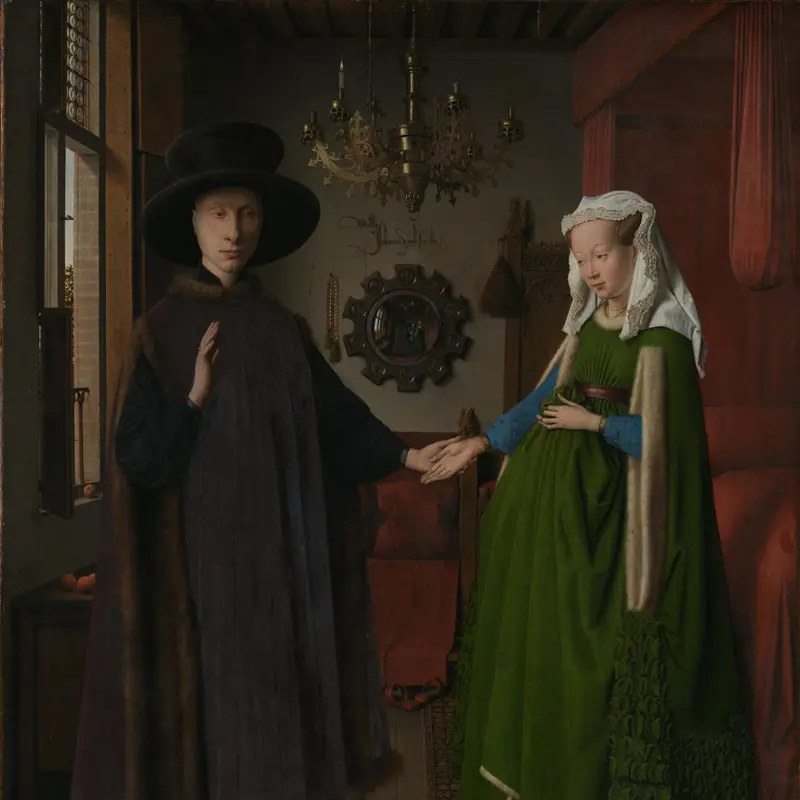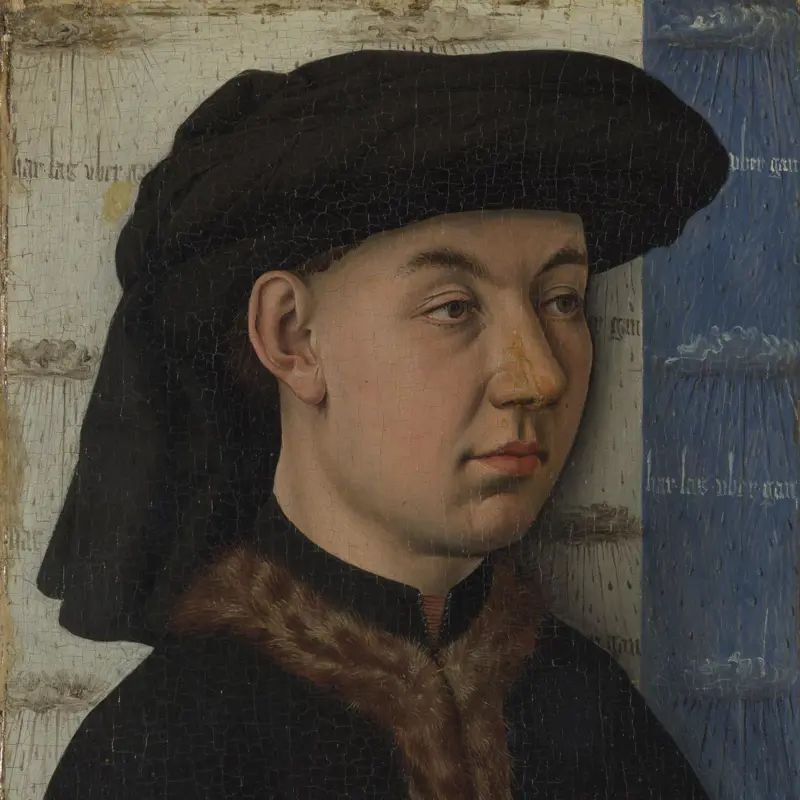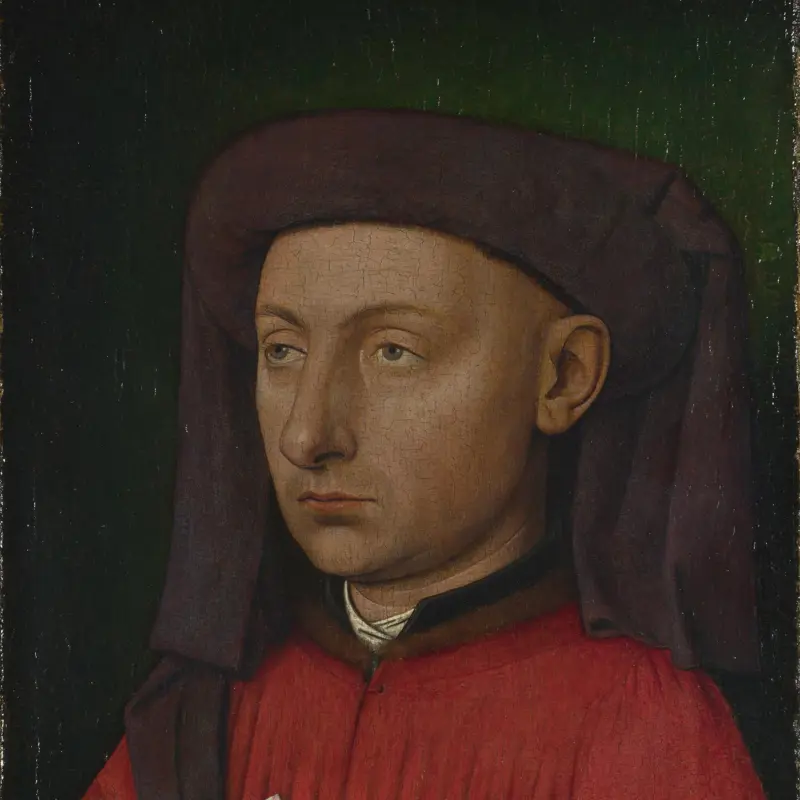Jan van Eyck is credited with originating a style of painting characterised by minutely realistic depictions of surface effects and natural light. This was made possible by using an oil medium, which allowed the building up of paint in translucent layers, or glazes.
Little is known of van Eyck's origins, but he probably came from Maaseik, near Maastricht, and was of the gentry class. He is first heard of in 1422 working in The Hague for John of Bavaria, ruler of Holland. From 1425 he was at Bruges and Lille as painter to Philip the Good, Duke of Burgundy. In 1428 van Eyck was sent to Portugal to paint Philip the Good's future wife, Isabella of Portugal.
Van Eyck appears to have painted many religious commissions and portraits of Burgundian courtiers, local nobles, churchmen and merchants. A small group of his paintings survive with dates from 1432 onwards. One of his most famous works is the 'Arnolfini Portrait', signed and dated 1434. It is thought that his 'Portrait of a Man' may be a self portrait.
Jan van Eyck
active 1422; died 1441

